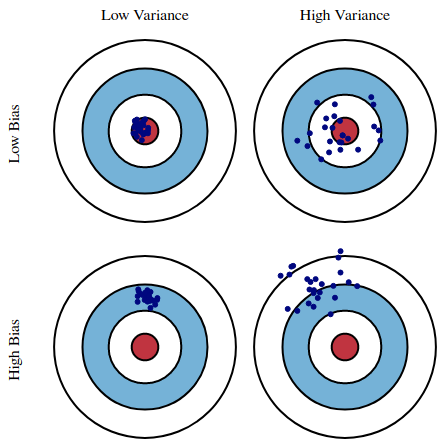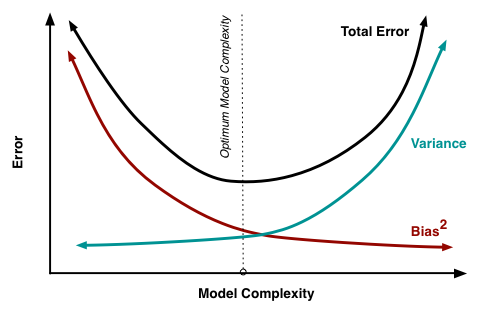YouTube
... Quora
...Google search
...Google News
...Bing News
- Data Science ... Governance ... Preprocessing ... Exploration ... Interoperability ... Master Data Management (MDM) ... Bias and Variances ... Benchmarks ... Datasets
- Data Quality ...validity, accuracy, cleaning, completeness, consistency, encoding, padding, augmentation, labeling, auto-tagging, normalization, standardization, and imbalanced data
- Backpropagation ... FFNN ... Forward-Forward ... Activation Functions ...Softmax ... Loss ... Boosting ... Gradient Descent ... Hyperparameter ... Manifold Hypothesis ... PCA
- Risk, Compliance and Regulation ... Ethics ... Privacy ... Law ... AI Governance ... AI Verification and Validation
- AI Solver ... Algorithms ... Administration ... Model Search ... Discriminative vs. Generative ... Train, Validate, and Test
- Policy ... Policy vs Plan ... Constitutional AI ... Trust Region Policy Optimization (TRPO) ... Policy Gradient (PG) ... Proximal Policy Optimization (PPO)
- Overfitting Challenge
- A Basic Recipe for Machine Learning | Hafidz Zulkifli
- Inductive Bias | Wikipedia
Two terms of bias in Artificial Intelligence:
- Node Bias - The activation of a node in a neural network is determined by the following: output = activation function (dot_product(weights, inputs) + bias) This means when calculating the output of a node, the inputs are multiplied by weights, and a bias value is added to the result. The bias value allows the activation function to be shifted to the left or right, to better fit the data. Hence changes to the weights alter the steepness of the sigmoid curve, whilst the bias offsets it, shifting the entire curve so it fits better. Note also how the bias only influences the output values, it doesn’t interact with the actual input data. Glossary of Deep Learning: Bias | Jaron Collis - Deeper Learning
- Model Bias - Bias can creep into algorithms in several ways. AI systems learn to make decisions based on training data, which can include biased human decisions or reflect historical or social inequities, even if sensitive variables such as gender, race, or sexual orientation are removed. What Do We Do About the Biases in AI? | J. Manyika, J. Silberg, and B. Presten - Harvard Business Review
Node Bias


|
|
|
|
Diagnosing Bias vs Variance
Andrew Ng Advice for Applying Machine Learning
|
|
|
|
|
|
Learning To See [Part 9: Bias Variance Throwdown]
In this series, we'll explore the complex landscape of machine learning and artificial intelligence through one example from the field of computer vision: using a decision tree to count the number of fingers in an image. It's gonna be crazy.
|
|
|
Bias in an Artificial Neural Network explained | How bias impacts training
When reading up on artificial neural networks, you may have come across the term “bias.” It’s sometimes just referred to as bias. Other times you may see it referenced as bias nodes, bias neurons, or bias units within a neural network. We’re going to break this bias down and see what it’s all about. We’ll first start out by discussing the most obvious question of, well, what is bias in an artificial neural network? We’ll then see, within a network, how bias is implemented. Then, to hit the point home, we’ll explore a simple example to illustrate the impact that bias has when introduced to a neural network.
|
|
|
|
Bias Variance Trade off
Bias Variance Trade off is an important concept when it comes to choosing a machine learning algorithm for you problem. Bias is the expectation in error and variance is the variability in the model. In this tutorial we look at why we need bias variance trade off, how it effects the accuracy and how to optimally select bias and variance and avoid over fitting and under fitting conditions.
|
|

Model Bias
|
How To Stop Artificial Intelligence From Marginalizing Communities? | Timnit Gebru | TEDxCollegePark
Timnit Gebru, Stanford Alum and Co-Founder of Black in AI, shares remarkable insights to show how artificial intelligence is influencing thinking and decision-making in ways we didn't imagine and must counter before it further marginalizes people. Timnit works at Microsoft, New York in the Fairness Accountability Transparency and Ethics (FATE) Group where her team works on the complex social implications of AI, machine learning, data science, large-scale experimentation, and increasing automation. She previously worked at Stanford’s Artificial Intelligence Lab where she received her PhD, and is Co-Founder of Black in AI, an organization that aims to foster collaborations and discuss initiatives to increase the presence of Black people in the field of Artificial Intelligence. This talk was given at a TEDx event using the TED conference format but independently organized by a local community. Learn more at https://www.ted.com/tedx
|
|
|
|
The Emerging Theory of Algorithmic Fairness
As algorithms reach ever more deeply into our daily lives, increasing concern that they be “fair” has resulted in an explosion of research in the theory and machine learning communities. This talk surveys key results in both areas and traces the arc of the emerging theory of algorithmic fairness.
|
|


